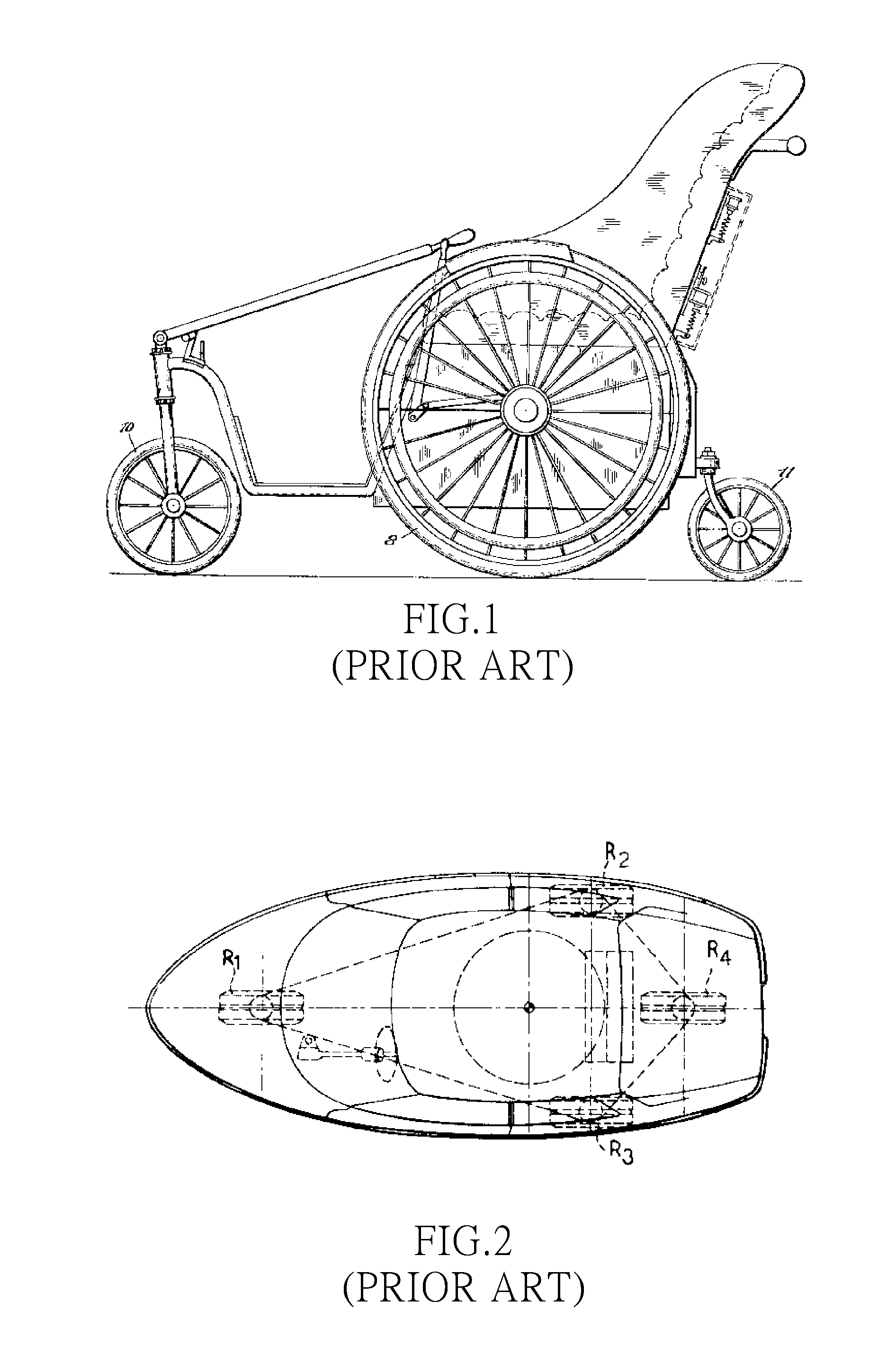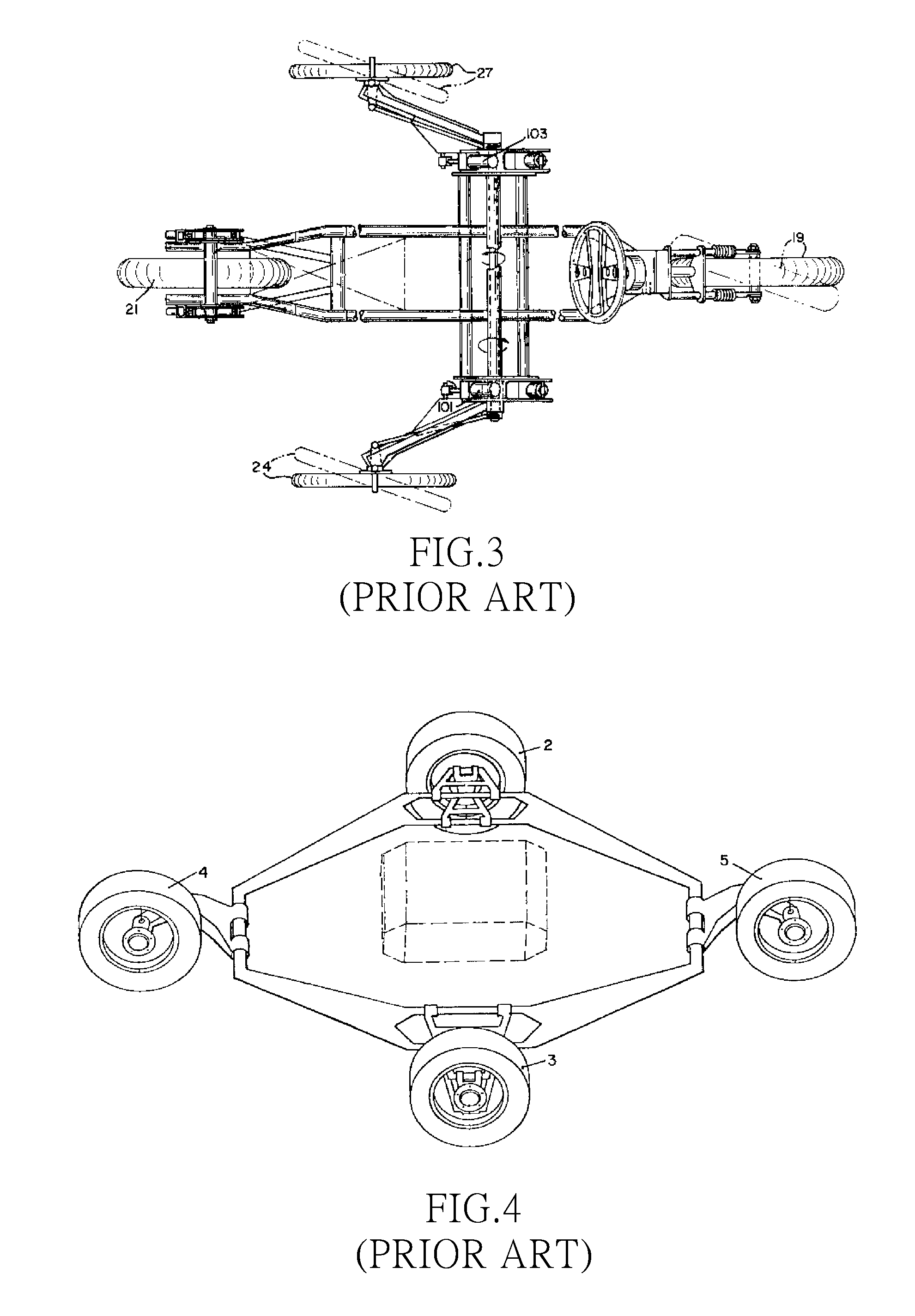Wheel Arrangement For A Four-Wheeled Vehicle
- Summary
- Abstract
- Description
- Claims
- Application Information
AI Technical Summary
Benefits of technology
Problems solved by technology
Method used
Image
Examples
Embodiment Construction
[0029]Referring to FIGS. 5-7, which are respectively a perspective view, a top plan view and a side elevation view of a wheel arrangement for a four-wheeled vehicle in accordance with a preferred embodiment of the present invention. The four-wheeled vehicle 1 includes a vehicle frame 11 and a chassis 12. Wherein, the front wheel unit 2, having a front wheel 21 and a pivoting axis A, is disposed at the front of the vehicle frame 11 by connecting the same to the front segment of the vehicle frame 11 using a supporting base 22. In addition, the vehicle frame 11 further comprises a steering device 13 (illustrated as a shape of a steering wheel, shown in FIG. 1), which is connected to the front wheel unit 2 through a switching mechanism 14. It is noted that the switching mechanism 14 can be a mechanical structure or an electronic or electrical system. A driver can control the steering device 13 to drive the front wheel unit 2 to steer around the pivoting axis A through the switching mech...
PUM
 Login to View More
Login to View More Abstract
Description
Claims
Application Information
 Login to View More
Login to View More - R&D
- Intellectual Property
- Life Sciences
- Materials
- Tech Scout
- Unparalleled Data Quality
- Higher Quality Content
- 60% Fewer Hallucinations
Browse by: Latest US Patents, China's latest patents, Technical Efficacy Thesaurus, Application Domain, Technology Topic, Popular Technical Reports.
© 2025 PatSnap. All rights reserved.Legal|Privacy policy|Modern Slavery Act Transparency Statement|Sitemap|About US| Contact US: help@patsnap.com



